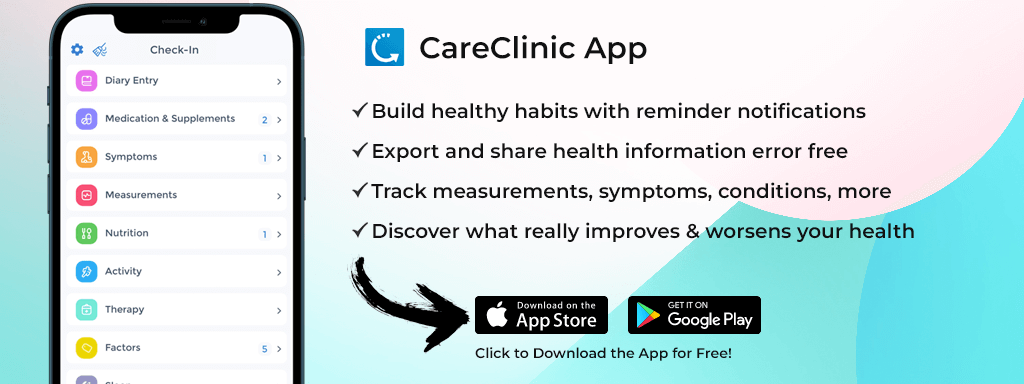
Living with digestive health issues can be challenging, but with the right tools and resources, managing your condition is possible. One such tool that has gained popularity among those with digestive disorders is the FODMAP app. In this comprehensive guide, we will explore the world of FODMAP and how the best app can help you effectively manage your digestive health.[1][2][3][4][5]
Understanding FODMAP and Its Impact on Digestive Health
Before diving into the intricacies of FODMAP apps, it is essential to have a clear understanding of what FODMAP actually is. FODMAP stands for Fermentable Oligosaccharides, Disaccharides, Monosaccharides, and Polyols. These are short-chain carbohydrates and sugar alcohols that are poorly absorbed by the small intestine.
FODMAPs can cause digestive symptoms such as bloating, gas, abdominal pain, and diarrhea in individuals with conditions like irritable bowel syndrome (IBS) and other digestive disorders. By following a low FODMAP diet, you can effectively manage and alleviate these symptoms, improving your overall digestive health.
What is FODMAP?
FODMAPs are a group of carbohydrates and sugar alcohols that are found in various foods. They include:
- Oligosaccharides: Fructans and galacto-oligosaccharides (GOS), found in wheat, rye, onions, and legumes.
- Disaccharides: Lactose, found in milk, yogurt, and soft cheeses.
- Monosaccharides: Fructose, found in honey, fruits, and high fructose corn syrup.
- Polyols: Sorbitol and mannitol, found in certain fruits, artificial sweeteners, and sugar-free products.
These FODMAPs can be present in a wide range of foods, making it challenging for individuals with digestive disorders to identify and avoid them. However, with the help of FODMAP apps, this process becomes much easier and more convenient.
How FODMAP Affects Your Digestive System
When FODMAPs reach the large intestine, they are fermented by bacteria, leading to the production of gases and osmotic effects. This can result in the uncomfortable symptoms commonly associated with digestive disorders such as IBS. Everyone’s sensitivity to FODMAPs is different, meaning that certain foods may trigger symptoms in some individuals while being well-tolerated by others.
Understanding your personal tolerance to FODMAPs is crucial in managing your digestive health. By keeping a food diary and tracking your symptoms, you can identify which specific FODMAPs are problematic for you. This knowledge allows you to make informed decisions about your diet and avoid potential triggers.
With a FODMAP app, you can easily access comprehensive lists of low and high FODMAP foods, making grocery shopping and meal planning a breeze. These apps often provide detailed information about FODMAP content in various food items, allowing you to make informed choices about what to include in your diet.
Some FODMAP apps even come with a symptom tracker, allowing you to monitor and analyze your digestive symptoms over time. This feature can help you identify patterns and triggers, empowering you to take control of your digestive health.
FODMAP apps are valuable tools for individuals with digestive disorders. They provide essential information, support, and guidance, making it easier to navigate the complexities of a low FODMAP diet. By incorporating a FODMAP app into your daily routine, you can effectively manage your symptoms and improve your overall well-being.[6]
The Importance of Managing Your FODMAP Intake
Managing your FODMAP intake is crucial in maintaining control over your digestive health. By adhering to a low FODMAP diet, you can experience numerous benefits beyond symptom relief.
When it comes to digestive health, it’s essential to understand the role of FODMAPs in your diet. FODMAPs, which stands for Fermentable Oligosaccharides, Disaccharides, Monosaccharides, and Polyols, are a group of carbohydrates that can be difficult for some individuals to digest. It is important to note that FODMAPs are not inherently bad for everyone. In fact, many high FODMAP foods provide essential nutrients. However, for individuals with specific digestive disorders, reducing or eliminating high FODMAP foods from their diet can be beneficial.
A low FODMAP diet is not a permanent solution but rather a tool for identifying trigger foods. By following a low FODMAP diet, you can pinpoint which specific foods are causing digestive distress. Once trigger foods have been identified, a more personalized approach can be taken to manage your digestive health.
Health Benefits of a Low FODMAP Diet
Following a low FODMAP diet can provide numerous health benefits, including:
- Reduced digestive symptoms: By eliminating high FODMAP foods from your diet, you can alleviate bloating, gas, abdominal pain, and diarrhea.
- Improved gut health: A low FODMAP diet can promote a healthy balance of gut bacteria, which is essential for overall digestive health.
- Enhanced nutrient absorption: By reducing the intake of certain carbohydrates that can impair nutrient absorption, you can ensure optimal nourishment. Some high FODMAP foods, such as wheat and certain fruits, can interfere with the absorption of important nutrients like iron and calcium.
- Better quality of life: With reduced digestive symptoms, you can enjoy a better quality of life, free from the discomfort and disruption caused by digestive disorders. Digestive issues can have a significant impact on your daily activities, relationships, and overall well-being. By managing your FODMAP intake, you can regain control over your digestive health and experience a greater sense of freedom and enjoyment in your life.
Managing your FODMAP intake is not only important for symptom relief but also for promoting overall digestive health and well-being. By following a low FODMAP diet, you can experience a range of benefits, from reduced digestive symptoms to improved gut health and enhanced nutrient absorption. Take control of your digestive health today by incorporating a low FODMAP diet into your lifestyle.[7][8][9]
Comprehensive Food Database
A crucial aspect of any FODMAP app is its database of foods. The app should provide an extensive list of both high and low FODMAP foods, making it easy for you to identify what you can and cannot eat. From fruits and vegetables to grains and dairy products, the database should cover a wide range of food items. Additionally, this database should be regularly updated to ensure accuracy. After all, new research and findings can lead to changes in FODMAP classifications, and you want to stay up to date with the latest information.
Imagine having a FODMAP app that not only tells you which foods to avoid but also provides detailed information about the FODMAP content of each food item. You could easily search for a specific food and instantly see its FODMAP rating. This level of detail can be incredibly helpful, especially when you’re just starting out on your FODMAP journey and need guidance on what to eat and what to avoid.
Personalized Meal Plans
To make following a low FODMAP diet more manageable, the app should have the option to generate personalized meal plans. These meal plans should take into account your personal preferences, dietary restrictions, and provide you with suitable recipes and meal ideas. Whether you’re a vegetarian, have gluten intolerance, or simply want to try new and exciting dishes, the app should be able to cater to your needs.
Imagine waking up in the morning and opening your FODMAP app to find a customized meal plan for the day. It could include a delicious low FODMAP breakfast, lunch, dinner, and even snacks. With just a few taps, you could have a complete meal plan that takes the guesswork out of your FODMAP journey. Plus, having access to a variety of recipes can help you stay motivated and inspired to stick to your low FODMAP diet.
Progress Tracking and Reports
Tracking your progress is essential for understanding your triggers and how your digestive system responds to different foods. Therefore, the best FODMAP app should include features that allow you to track your meals, symptoms, and any other relevant information. It should also provide you with reports and insights, helping you identify patterns and make informed decisions.
Imagine being able to log your meals, record any symptoms you experience, and track your progress over time. The app could provide you with visual representations of your data, such as charts and graphs, making it easier to spot trends and correlations. With this information at your fingertips, you could gain a deeper understanding of how your body reacts to certain foods and make adjustments to your diet accordingly.
Furthermore, the app could generate reports that summarize your progress and provide you with valuable insights. These reports could highlight your trigger foods, show improvements in your symptoms, and offer suggestions for further optimization. Armed with this knowledge, you could take control of your digestive health and make more informed decisions about your diet.
How to Effectively Use a FODMAP App
Now that you have chosen the best FODMAP app for your needs, let’s explore how you can make the most of its features to effectively manage your digestive health.
Managing your digestive health can be a complex task, but with the right tools and strategies, it becomes much easier. A FODMAP app can be a valuable resource in this journey, providing you with personalized meal plans, tracking features, and insightful reports. By following these tips, you can maximize the benefits of your chosen app and take control of your digestive well-being.
Setting Up Your Profile
Begin by setting up your profile on the app, entering your personal information, dietary restrictions, and preferences. This step is crucial as it allows the app to generate personalized meal plans and recommendations that align with your needs. By providing accurate information about your health and dietary requirements, you can ensure that the app’s suggestions are tailored to your unique situation.
Additionally, take the time to explore the app’s settings and customization options. Some apps may allow you to adjust portion sizes, select specific food categories to focus on, or even set reminders for meal times or medication intake. By customizing the app to your preferences, you can enhance your user experience and make it even more effective in supporting your digestive health.
Tracking Your Meals and Symptoms
Consistently track your meals and symptoms using the app’s tracking features. This is a fundamental aspect of effectively managing your digestive health with a FODMAP app. By diligently recording what you eat and any symptoms you experience, you create a valuable database of information that can help you identify patterns and triggers.
When tracking your meals, remember to be as detailed as possible. Include information about portion sizes, cooking methods, and any additional ingredients or condiments used. The more comprehensive your tracking, the better insights you can gain from the app’s analysis. Additionally, consider adding notes about your stress levels, physical activity, and sleep quality, as these factors can also impact your digestive health.
Furthermore, some FODMAP apps offer barcode scanning capabilities, allowing you to quickly and accurately log packaged foods. This feature can save you time and effort while ensuring that your tracking is accurate and reliable.
Interpreting Your Data
Regularly review the reports and insights provided by the app based on your tracking data. This step is crucial in understanding the connections between your diet and your symptoms. Look for patterns and connections between certain foods and your symptoms, such as bloating, abdominal pain, or changes in bowel movements.
As you analyze your data, consider consulting with a healthcare professional or registered dietitian who specializes in digestive health. They can provide guidance and help you interpret the information provided by the app. Together, you can develop a deeper understanding of your triggers and make informed decisions about your diet.
Additionally, some FODMAP apps offer educational resources and articles on digestive health. Take advantage of these materials to expand your knowledge and stay up-to-date with the latest research and recommendations.
Remember that managing your digestive health is an ongoing process. As you continue to use the app and gather more data, you may discover new insights and make further adjustments to your diet. By staying engaged with the app and regularly reviewing your data, you can develop greater self-awareness and fine-tune your diet accordingly.
The Future of FODMAP Apps
As technology continues to evolve, so does the landscape of FODMAP apps. Several exciting trends are emerging, revolutionizing the way we manage our digestive health.
Emerging Trends in Digital Health
New FODMAP apps are integrating artificial intelligence to provide more accurate and personalized recommendations. AI algorithms can analyze a vast amount of data and deliver tailored information that considers individual sensitivities and responses to different foods.
How Technology is Improving Digestive Health Management
With the growth of wearable devices and connected sensors, individuals can now track their digestive health in real-time. This data can be seamlessly integrated into FODMAP apps, providing a more holistic approach to digestive health management and enabling users to make timely adjustments to their diet and lifestyle.
Finding the best FODMAP app can be a game-changer in effectively managing your digestive health. By understanding FODMAP, following a low FODMAP diet, and utilizing the features of a top-quality app, you can take control of your symptoms, improve your overall well-being, and enjoy a more vibrant and comfortable life.
Manage digestive health with CareClinic App—track FODMAP intake, use features like food diary and symptom tracker for improved gut health. Monitor your progress with insightful reports and make informed decisions about your diet with the help of this intuitive tool. Experience the benefits of a low FODMAP diet and witness the positive changes in your overall well-being. Ready to transform your digestive health journey? Install App today and take control of your symptoms for a happier, healthier life.
References
- “Low FODMAP Diet App | Monash FODMAP – Monash Fodmap”. https://www.monashfodmap.com/ibs-central/i-have-ibs/get-the-app/
- “The ultimate app for a healthier gut | SiboSafe”. https://www.sibosafe.com/
- “Fast FODMAP”. https://www.fastfodmap.com/
- “Cara Care: IBS, FODMAP Tracker on the App Store”. https://apps.apple.com/us/app/cara-care-ibs-fodmap-tracker/id1133687886
- “Nutrive: Low FODMAP Diet on the App Store”. https://apps.apple.com/us/app/nutrive-low-fodmap-diet/id1626018886
- “FODMAP”. https://en.wikipedia.org/wiki/FODMAP
- “Low-FODMAP Diet Is Associated With Improved Quality of Life in IBS Patients-A Prospective Observational Study – PubMed”. https://pubmed.ncbi.nlm.nih.gov/30644587/
- “The Low-FODMAP Diet: A Proven Gut Therapy – The Weston A. Price Foundation”. https://www.westonaprice.org/health-topics/low-fodmap-diet-gut/
- “Effects of a Low-FODMAP Diet on Irritable Bowel Syndrome in Both Children and Adults—A Narrative Review – PMC”. https://www.ncbi.nlm.nih.gov/pmc/articles/PMC10223978/
- “Low FODMAP Diet App help| Monash FODMAP – Monash Fodmap”. https://www.monashfodmap.com/get-app-help/


